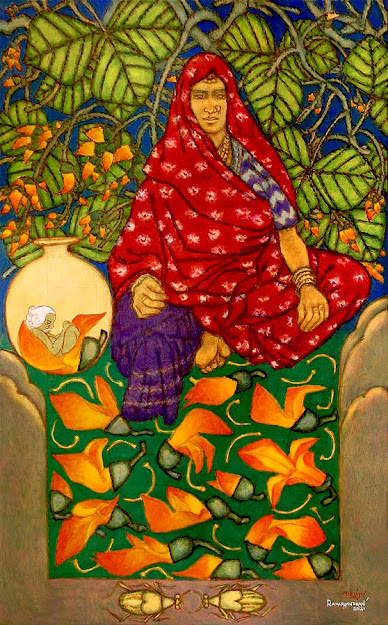Kochi, Nov 25: The sixth edition of the Kochi-Muziris Biennale (KMB) will feature 12 new venues, in addition to the nine existing ones and seven collateral venues, extending from West Kochi to Willingdon Island and Ernakulam. Artists from India and abroad will display their creative brilliance in contemporary art across these venues.
Aligning with the KMB theme, for the time being, each venue is steeped in collective memories of history and culture of a bygone era, oscillating between past and present. The organiser, Kochi Biennale Foundation, has been repurposing quaint, empty former warehouses and historic structures into exhibition venues from its inception in 2012.
“We have selected the venues in such a way that it resonates with the theme, wherein art is a process, dynamic and shape-shifting. From Durbar Hall in Ernakulam to those in Fort Kochi, Mattancherry and Willingdon Island, each venue is an exploration of space, time and life,” said Dr Venu V, KBF Chairperson.
The venues will showcase the main exhibition (KMB) curated by Nikhil Chopra with HH Art Spaces, Goa, featuring the works of 66 artists/collectives, and parallel shows such as the Invitation programme, Edam –a curated exhibition showcasing 36 artists/ collectives with roots in Kerala, Students’ Biennale (SB) which is curated by student artists from seven regions across the country, Art By Children (ABC), a key initiative of KBF that aims to provide democratic access to high-quality art education among children and communities; and the Residency, a project that aims to strengthen international collaboration by building partnerships among organisations, collectives, and networks.
Preparations are in full swing in all the venues to host the 110-day Asia’s biggest art festival, which opens to the public on December 12.
The new venues in Fort Kochi are St. Andrew’s Parish Hall (SB, Invitations); Arthshila, Kochi (SB); Jail of Freedom Struggle (Invitations); and Water Metro (ABC).
The others are a few metres apart on Bazaar Road in Mattancherry-- BMS Warehouse (SB); 111 Markaz and Cafe (KMB); SMS Hall (KMB); Devassy Jose and Sons (Invitations, Residency); Simi Warehouse (Invitations); Cube Art Spaces (Edam) and Space, Indian Chamber of Commerce (KMB, Invitations, SB). Island Warehouse (KMB) is next to the Water Metro station in placid Willingdon, the country’s largest artificial island surrounded by water.
The venues are connected by the Water Metro. The ripples around the murmur of migrations that made Fort Kochi a melting-pot for millennia. The pocket bears traces of trade links with Romans, Phoenicians, Persians, Egyptians, and Greeks, as well as influences from the Chinese, Jewish, Arab, Portuguese, Dutch, and British cultures, and the diverse cultures across India.
Durbar Hall (KMB) in Ernakulam is connected by Water Metro and other boat services to Fort Kochi. A 220-m deviation from River Road to Princess Street and Tower Road will open onto Jail of Freedom Struggle, where freedom fighters from across India were incarcerated.
A 300-m walk on River Road will lead to David Hall (Invitations), a Dutch architectural marvel, opposite the Parade Ground. Just 170 metres away on Parade Road is Arthshila Kochi, once a British food retailer and now part of Takshila Educational Society. Another 250 metres away on K J Hershel Road is St. Andrews Parish Hall.
A walk of 450 metres to the left along the River Road and Bellar Road leads to Aspinwall House, where artworks will be exhibited in the Coir Godown and the Director’s Bungalow.
Pepper House is another heritage structure with its imposing view of the sea. The four-century-old building is a half-kilometre walk down Calvathy Road near Bellar Road.
The landscape shifts from the spacious colonial structures in Fort Kochi to the historic sites and vast warehouses in the once-thriving international trading hub of Mattancherry, across the Calvathy Canal. The smell of spices wafts through the air of this place, with new and old venues lining the Bazaar Road.
A 600-m walk from Pepper House is Armaan Collective and Cafe (Edam), embedded with traces of Kochi’s maritime and mercantile past. Around 500 metres off is Anand Warehouse, with many new venues being a stone’s throw away. A 150-m stroll will lead to the Garden Convention Centre (Edam). In its vicinity is VKL Warehouse.
Half a kilometre away from VKL is Oottupura (Invitations) on Jew Town Road, the vintage dining hall of the Pazhayannur Bhagavathi Temple. Mattancherry Palace was once the seat of the Kochi Maharaja, who shifted from Kodungallur (Muziris) after the 1341 floods in the river Periyar. Much later, he moved to Durbar Hall in Ernakulam.

,%202024.%C2%A0Oil%C2%A0on%C2%A0paper.jpg)





